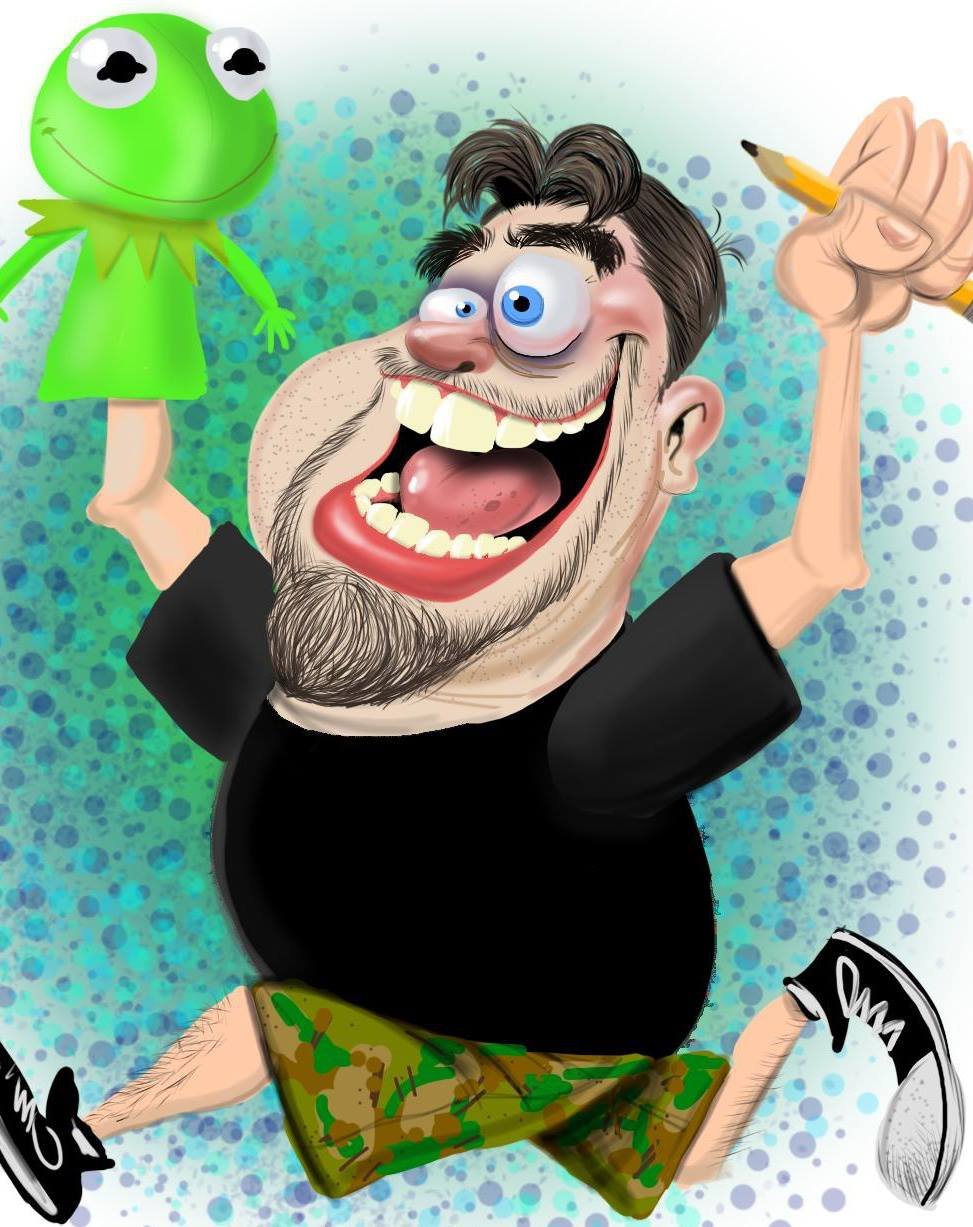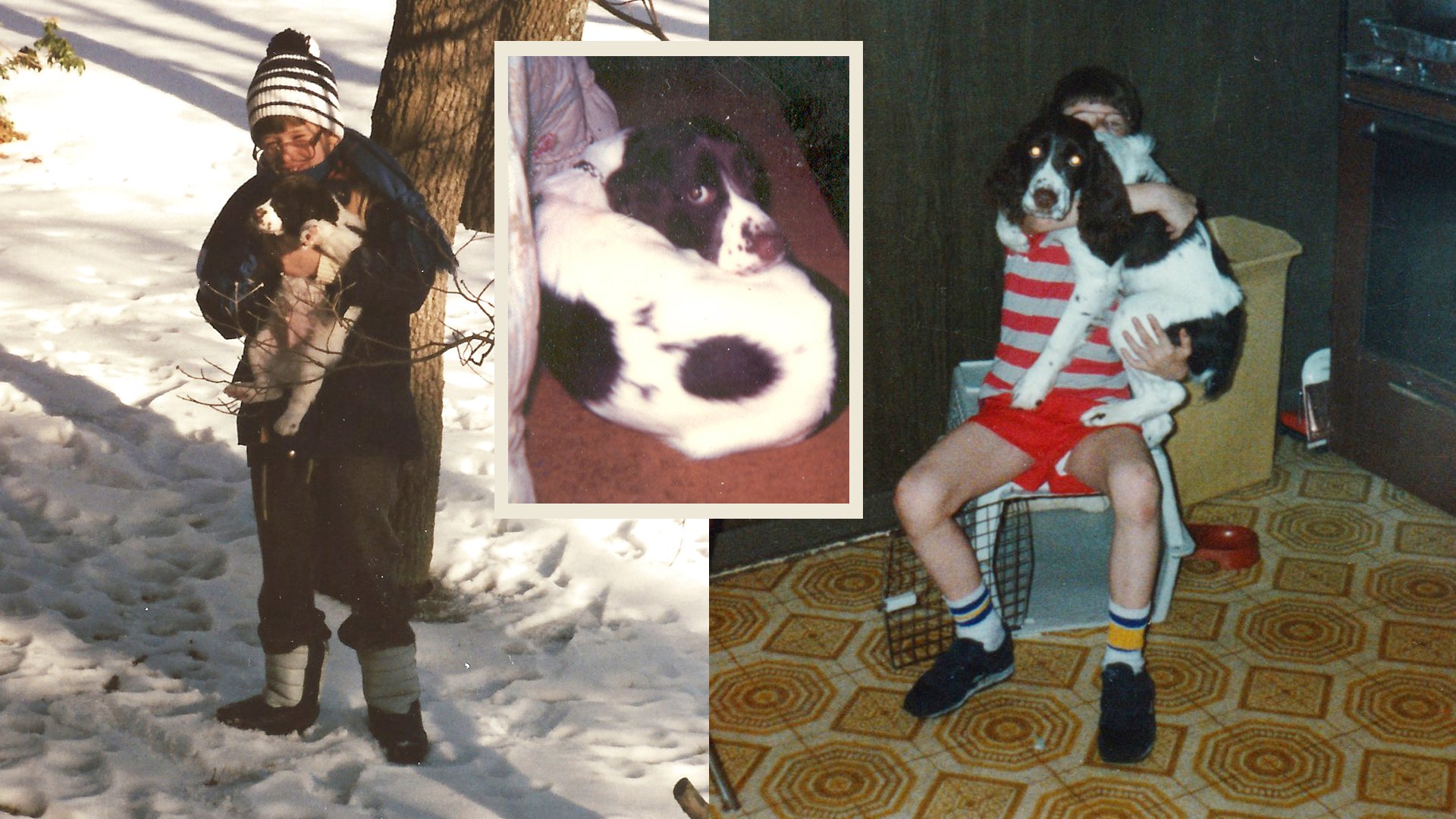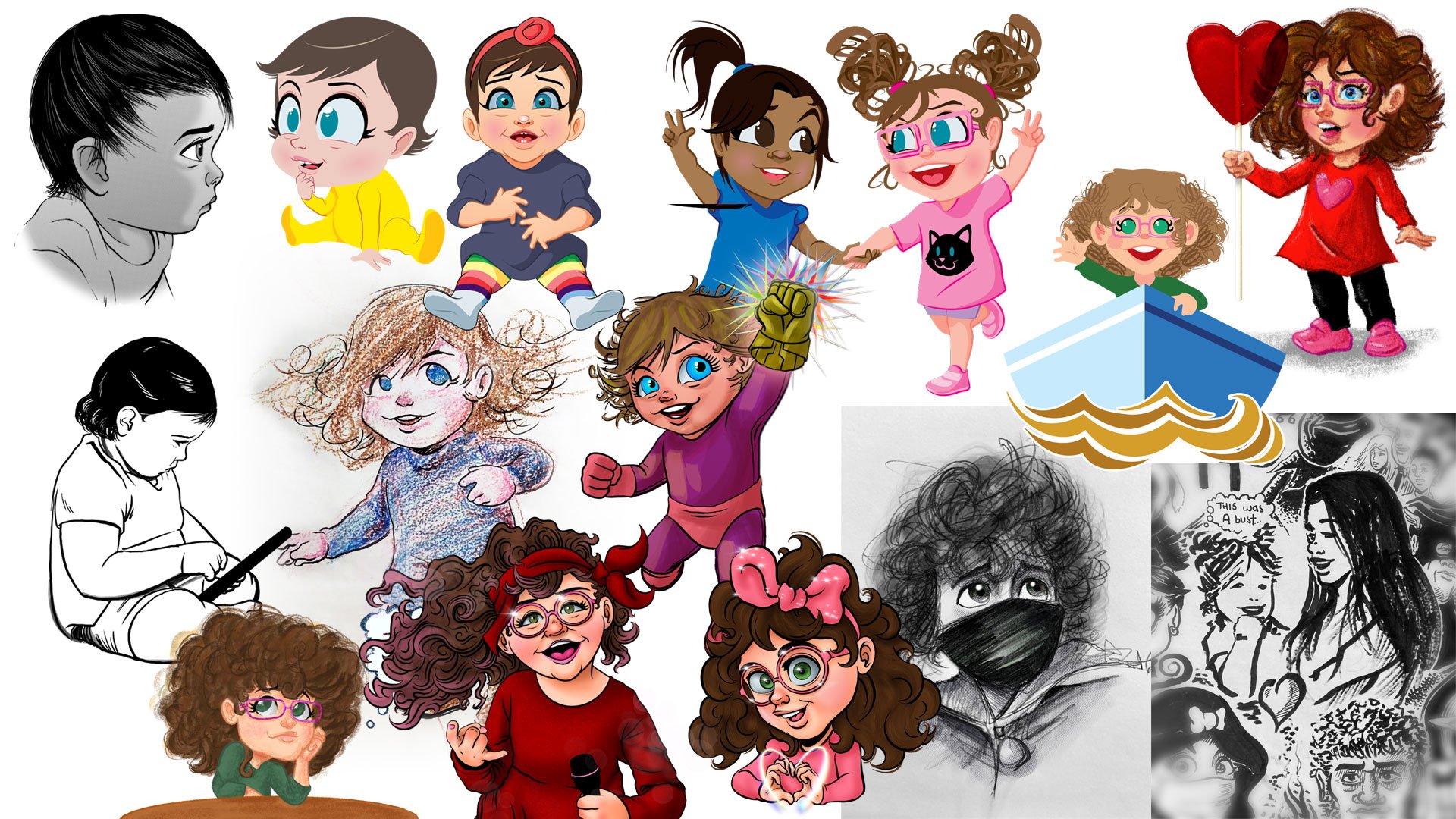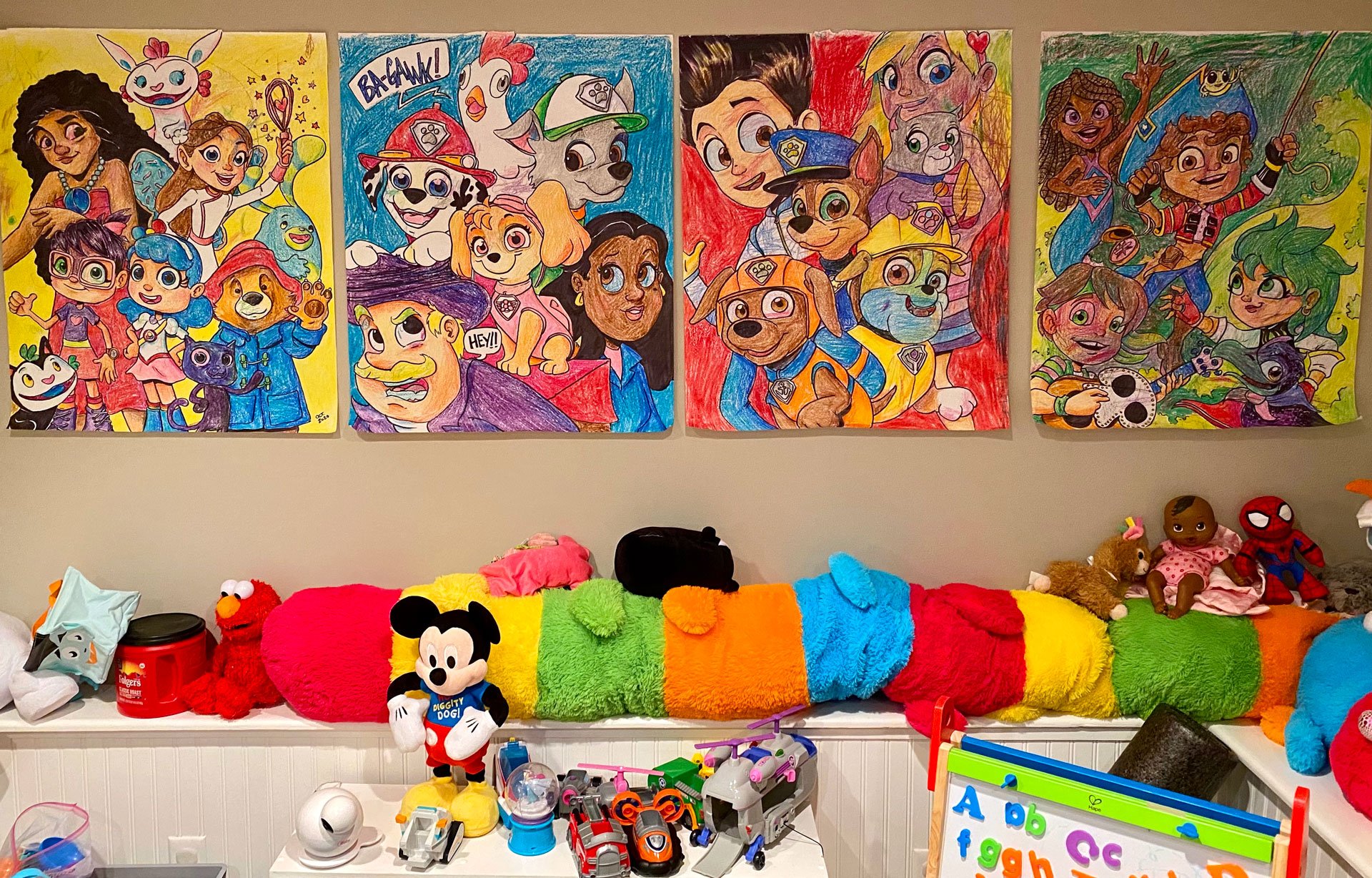Drawing ain’t easy. Drawing something recognizable takes effort. Drawing people is overwhelming. Exploiting peoples’ unique features in a fun and exaggerated way for their entertainment is downright insane. That’s where Kenny Durkin comes in.
Kenny Durkin by Kenny Durkin
I’ve sung Kenny’s praises before and he’s no stranger to this blog or me pestering him for all sorts of things. He graciously agreed to me bombarding him with questions again, but before that, let’s take a quick refresher course. Kenny is a cartoonist who studied Illustration at Milwaukee Institute of Art and Design. He’s performed live caricature entertainment at events across the United States for over 20 years, and drawn caricatures at Walt Disney World retail locations and special events for 15 years. He has his cartoons on apparel for AMC's Duck Dynasty, Disney's The Muppets, and The Jim Henson Company, writes and illustrates his own online comic strip Father of the Brood, and is a proud member of the prestigious National Cartoonists Society and an award-winning Gold member of the International Society of Caricature Artists. On a more personal note; Kenny was one of the key heads of the design team for ToughPigs Great Muppet Mural, and has been a patient and wonderful friend who has helped me out personally with tons and tons of other projects. I cannot hype this man up enough because his artistic talent is only matched by his kindness and sense of humor.
Kenny and I hanging at Gene Barretta’s home, May 2015
So let’s start with the basics: how did you get into drawing? And how did you get so good?!
Kenny: I've been drawing for as long as I can remember. The first drawing I can recall was of Kermit and Grover. I was born in 1971 and back then, there was no way of recording a television show to watch later. When the Sesame Street episode of the day was over, I still wanted to spend more time with my "friends", so I drew them. I found that was a great way to express myself creatively, and why Kermit still pops up in my drawings to this day.
Kermit the Frog as Indiana Jones and gorgeous caricatures of Frank Oz and Jim Henson
All that said, I still don't think I'm "good" at it. I think it's like having an athletic ability or being a musician. You're born with an inclination, but you still have to work at it. You have to put in the time and practice every day. And you have to be willing to fail a lot. I'm obsessed with learning to draw better, so I watch instructional videos, take courses, look at art instruction books, and I'm friends with a lot of other artists so I can push myself to soak up as much info as I can. And I've trained myself to when I'm not drawing, I'm OBSERVING. I'm looking at trees, buildings, people, animals, vehicles, clouds, everything I see and deconstructing them. I'm breaking them down into simple shapes and filing them away in the visual encyclopedia in my brain. Then I can pull them out to work out later on paper. In a way, it's a thing that I can't shut off and won't leave me alone!
We all know Jim Henson is a major creative inspiration to you, but who else inspires your artistic talent?
There are a whole lot of people who inspire me. It would be impossible to list them all. I think starting out, it was newspaper cartoonists like Charles Schultz, Walt Kelly, Hank Ketcham, Dik Browne, Jim Davis, Mort Walker, Lynn Johnston, and so many others. Later it was Gary Larson, Berke Breathed, Bill Watterson, John Hambrock, and WAYNO.
MAD Magazine was huge for me. I gobbled up everything I could from artists like Jack Davis, Sam Viviano, Paul Coker, Mort Drucker, Sergio Aragones, Don Martin, Al Jaffee, and Tom Richmond. I wasn’t much of a comic book guy, but I sought out more cartoony titles like Uncle Scrooge, Groo the Wanderer, and Zooniverse. For animation, it was of course Walt Disney, Warner Brothers, Chuck Jones, Fleischer Studios, Hanna Barbara, Don Bluth, Richard Williams, etc.
But beyond cartoons, I suppose there’s not much that DOESN’T inspire me. Anyone involved with the process of creation interests me. Musicians, singers, actors, directors, costume designers, prop builders, effects artists, folk artists and so many others. I’m all over the place.
The casts of Seinfeld and Stranger Things
When and how did you realize your knack for caricatures?
There was a magazine for kids called Dynamite that had celebrity caricatures by Sam Viviano. That was my gateway to the art of caricature. I followed him over to MAD Magazine which was a caricature–heavy publication. I studied what those artists were doing. I would ask myself, “The caricature looks like the person. Now WHY is that so? What is the artist doing that makes the likeness so strong?”. So I’d try drawing actors I’d see on T.V., friends and family, and teachers in school. My parents would get notes from my teachers saying what a great student I was because I was always taking notes. Little did they know, I was actually drawing them!
Caricatures of Muppet performers Jerry Nelson, Dave Goelz, Richard Hunt, Frank Oz, Jim Henson, and Louise Gold
What kind of lessons or classes did you have to take to go pro?
I was fortunate enough to have art classes all through grade school. In high school I took every class that was even remotely connected to art, like printmaking and drafting. I did a lot of scenery and prop building for school plays and musicals. I took classes when offered at museums like mask making.
I went to Milwaukee Institute of Art and Design and studied Illustration and Graphic Design. I also took classes there on Photography, Sculpture, Figure Drawing, Color Theory and Early German Film for some reason.
I’m still constantly educating myself. I watch videos, take online courses, read art instruction books, go to seminars, and take workshops. If you want to EARN, you’ve got to LEARN!
How quickly does it take to draw a single caricature?
It depends. When I’m drawing at events, the task is to draw as many guests as possible. I can draw a shoulders–up caricature in black and white in 1–2 minutes if I have to. At most events I draw faces and bodies in black and white, which take about 5 minutes.
A retail caricature face and body in color is about 12–15 minutes. Studio caricatures, depending on what the client and I have worked out, can take days.
Steve Buscemi and Daniel Radcliffe
Drawing people well enough to recognize them is hard. Drawing their more prominent features to the extreme and still be able to recognize them is ludicrous. Drawing people with exaggerated features so that they’re still recognizable and doing it fast is impossible. How do you do all of that?
Practice. It takes time to get your speed up. When you first start out, your instinct is to pencil everything in, ink over the top and then erase the pencil.Once you develop a system that works, you won’t need to rely as much on the pencil (or at all). Experimenting with materials, (paper, drawing implements) that can improve your speed. Recognizability is more important than speed. In the end, it has to resemble the person you’re drawing.
Have you ever drawn someone and they reacted negatively because they felt you offended them?
Thankfully not often. One time when I was only a couple of years in, a subject got so mad at how I drew him that he lurked around until I had closed up and he followed me out to my car. Luckily security took care of him.
I did a studio piece for someone one time and after repeated redraws because she claimed it didn’t look like her, I actually TRACED her photograph. When she still insisted it didn’t look like her, I told her what I had done and she went with the first drawing I did.
You have to go into drawing caricatures knowing you’re not going to please everyone all the time. Statistically, it has to happen. So I’ll still get the occasional eye roll, but for the most part, people are pleased. They know what they stood in line for.
Is being sensitive to how someone might react to your caricature something that you consider when you draw them or is that mindset too restrictive and it’s better to believe that they should be aware it’s your job to exaggerate their likeness?
It’s tricky. When someone hires you to draw at their event, you don’t want to be the one insulting their guests, or making the host or booking agency look bad. It’s just not professional. You also don’t want to fall into the trap of drawing “genericatures” or drawing the same way over and over. You have to be sensitive and have empathy. You need to know when to lay back and be “safe” and when to kick it into gear and go for it. It’s an important skill that you have to develop over time.
Father of the Brood 2023 and 2018 when my daughter and I made a guest appearance!
Wow! And there it is! Proof that Kenny Durkin isn’t just really good at what he does, but why he’s the best there is! Make sure you visit Kenny’s website for more great art, but also follow him on Instagram, Twitter, and YouTube too!
Thanks so much again, Kenny for taking the time to share your story and talent! I am so grateful for you and our friendship. Follow me on Instagram and Twitter, and come back on Friday for a new blog post!

































